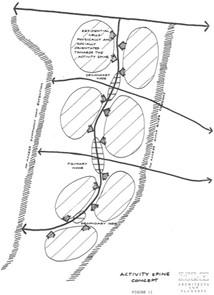Suburban Enclaves
“
—
”
During the apartheid period, the South African state was actively involved in constructing peripheral suburbs, known as townships, for non-White urban dwellers. With the advent of South African multi-racial democracy in 1994, the new state announced its continued dedication to provisional housing, albeit no longer along racial lines.
Delft, one such township, had been conceived during apartheid. The new state had the opportunity to redesign this township, and deliver economic empowerment and upliftment, rather than previous racial separation and control. Houses were constructed as part of the (now defunct) Reconstruction and Development Program, in which the state launched an ambitious plan to build one million units in five years.1
Housing built under this program, colloquially referred to as “RDP housing”, was usually composed of single-story free-standing units, organized into enclaved suburban plans. Accompanying subsidy amounts were scaled according to income level; subsequently, most of these houses were free. In anticipation that most households would not value this hefty investment, the state placed an eight-year sale restriction on state subsidized housing2 through the Housing Act Number 107, also known as the “preemptive clause”.
Since 1994, rapid densification in neighborhoods like Delft is aiding increased socio-economic activity of residents in the area. The predominantly single-story neighborhood, located within a reasonable distance of the city, still lacks a variety of houses on offer such as large-scale, higher quality or institutionally managed housing to service Cape Town’s increasing market3 of households with income between thirty-five-thousand to fifteen-thousand rand. Democratic townships have managed to create more racially diverse neighborhoods, while also excluding White people. These forms of housing could bring a broader range of tenants to the area, causing increased housing mobility, economic diversity, tertiary skills available, and general income into the neighborhood.
![]() Image source:
MLH Architects and Planners. “And Amendment to the Blue-Downs Delft Local Structure Plan.” Cape Metropolitan Council, April 1995.
Image source:
MLH Architects and Planners. “And Amendment to the Blue-Downs Delft Local Structure Plan.” Cape Metropolitan Council, April 1995.
References
1. Department of Housing. “A New Housing Policy and Strategy for South Africa.” South African Government, 1994, page 4. http://www.dhs.gov.za/sites/default/files/legislation/Policies_Housing_White_Paper.pdf.
2. Department of Human Settlements. “Housing Act 107 of 1997,” 1997, page 39 http://www.dhs.gov.za/sites/default/files/legislation/Housing_Act_107_of_1997.pdf.
3. Le Roux, Lené. “Residential Property Market Processes as Found in Delft, Western Cape.” Center of Affordable Housing Finance, 2016. https://housingfinanceafrica.org/app/uploads/Delft-Research-Report-FINAL_2016sm.pdf.
1. Department of Housing. “A New Housing Policy and Strategy for South Africa.” South African Government, 1994, page 4. http://www.dhs.gov.za/sites/default/files/legislation/Policies_Housing_White_Paper.pdf.
2. Department of Human Settlements. “Housing Act 107 of 1997,” 1997, page 39 http://www.dhs.gov.za/sites/default/files/legislation/Housing_Act_107_of_1997.pdf.
3. Le Roux, Lené. “Residential Property Market Processes as Found in Delft, Western Cape.” Center of Affordable Housing Finance, 2016. https://housingfinanceafrica.org/app/uploads/Delft-Research-Report-FINAL_2016sm.pdf.
 Image source:
MLH Architects and Planners. “And Amendment to the Blue-Downs Delft Local Structure Plan.” Cape Metropolitan Council, April 1995.
Image source:
MLH Architects and Planners. “And Amendment to the Blue-Downs Delft Local Structure Plan.” Cape Metropolitan Council, April 1995.